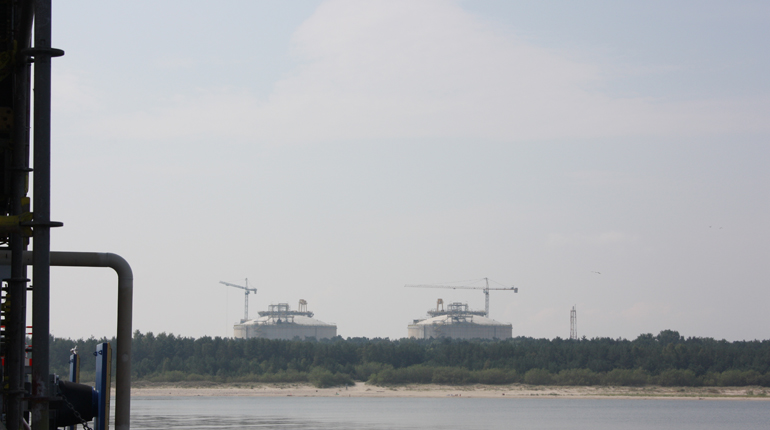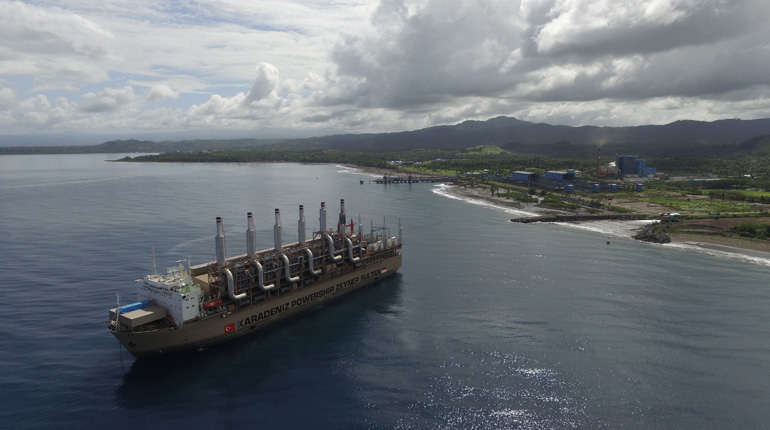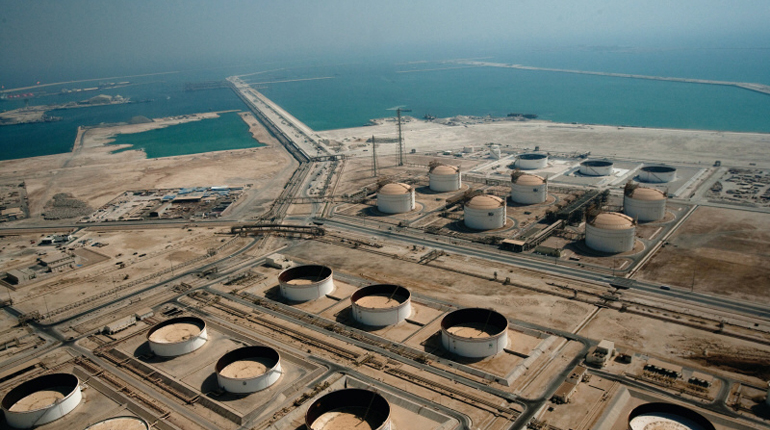 Poland imports LNG from Qatar, but Baltic Pipe would make it less vulnerable to spot price changes. (Interfax)
Poland imports LNG from Qatar, but Baltic Pipe would make it less vulnerable to spot price changes. (Interfax)
Dwindling Danish gas production could revive a pipeline scheme to connect the Polish market with Scandinavian production centres, it emerged after a summit between the Polish and Danish prime ministers in Warsaw this week.
“The Baltic Pipe, a strategic investment which we want to implement, is of crucial importance to us. Thanks to that investment, Poland’s energy security will improve significantly,” Polish Prime Minister Beata Szydlo said at the post-talks press conference on Monday alongside the prime minister of Denmark, Lars Løkke Rasmussen.
The summit came just days after Danish energy company AP Moller Maersk said it would be forced to close Tyra – Denmark’s largest gas field – in October 2018 if it could not find an economical way to upgrade the site.
Tyra provides around two-thirds of Denmark’s gas output, and its potential loss has forced Danish transmission system operator Energinet.dk to review alternatives, including Baltic Pipe.
“We are […] investigating whether there is a need for alternatives. This is what we are working on, and there are several opportunities for expanding the gas transmission network, for example toward Norway or a Baltic Pipe solution to Poland,” Torben Brabo, vice president for the gas market at Energinet.dk, said in a statement on 20 April.
The situation in Denmark could turn a Polish case for new infrastructure into a regional one, although the Danish government is said to be considering offering incentives to companies developing projects like Tyra, which could keep output flowing beyond 2018.
“What’s important is that there is a visible demand for a new route and the source of that is not only in Poland, but also Denmark […] Plus, Baltic Pipe has been on the EU’s PCI [project of common interest] list since 2015 [which] could ease issues related to project financing,” Agata Loskot-Strachota, senior fellow at thinktank the Centre for Eastern Studies in Warsaw, told Interfax Natural Gas Daily.
Paused pipeline
A 1990s development plan saw preliminary supply contracts signed between Poland’s PGNiG, Norway’s Statoil and Denmark’s DONG Energy under the stewardship of Polish Prime Minister Jerzy Buzek. His centre-right government was keen to ease dependence on Russia, but later administrations put the project on ice.
“The first scenario implies that Denmark will use Norwegian gas temporarily and will get back to self-sustainability after the lifting of [any Tyra] suspension. The second scenario implies that Denmark will stay import-dependent and will have a high interest in Norway and Poland connections,” Wojciech Jakóbik, an energy expert at Poland’s Jagiellonian Institute, told Interfax Natural Gas Daily.
Under the second scenario, any Baltic Pipe design could resemble the earlier plans to provide a full link between the Norwegian system, operated by Gassled, and Poland via Denmark. Polish media have suggested that production assets in Norway owned by Polish companies could contribute around 3 billion cubic metres per year towards any new capacity, Loskot-Strachota noted.
Poland has already opened a new LNG terminal at the port of Swinoujscie near the German border. A contract with Qatargas caters for the annual delivery of 1.5 bcm/y. But annual Polish consumption is heading beyond 16 bcm, and Gazprom supply constitutes around two-thirds of that.
“For Poland, a link with Norway is about creating genuine competition in the market by ensuring three independent sources of gas supply – as called for [by EU Commissioner for Energy Union] Maroš Šefcovic last year,” Loskot-Strachota said.
“It is also worth remembering that the project – if built – would start operating probably when the current contract with Gazprom expires. So it would be able to improve the terms of supply and diminish the share of Russian gas,” she said.
However, major obstacles remain. A feasibility study on the project design is still to be completed by the end of this year, and funding could be an issue. Buzek told Interfax Natural Gas Daily recently that an “idea that had practically no flaws 15 years ago does not have to be that excellent anymore.”
The former prime minister saw greater value in investing in new LNG import capacity, but Loskot-Strachota noted pipeline supplies could provide greater stability for Poland if the LNG market tightens and spot prices begin to rise.
“The important thing is to coordinate future work on new interconnectors with the LNG terminal in Swinoujscie,” Jakóbik said. “They can supplement each other and there is a possibility that, some day, LNG from Swinoujscie will be imported by Denmark using Baltic Pipe. More connections mean more security.”
If its domestic production is called into question, Denmark will need to review how it can switch from autarky to the EU norm of import dependence. “In future, [Danish] consumers will be buying more gas abroad. This is the current scenario for most of the other EU countries,” Brabo accepted.








Talk to us
Natural Gas Daily welcomes your comments. Email us at [email protected].